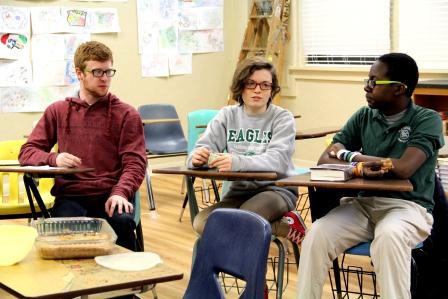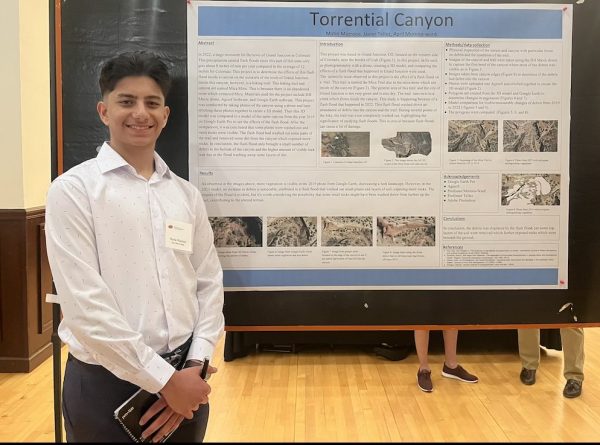Book chatter with Kat and Monica: The Curious Incident of the Dog In the Night-Time by Mark Haddon

Book club members (left to right) Jarek Howell, CJ Koso, and Godwin Shokoya discuss Mark Haddon’s “The Curious Incident of the Night-Time Dog.”
February 24, 2014
Author and cartoonist Mark Haddon is widely known for his ground-breaking novel of 2003, “The Curious Incident of the Dog in the Night-Time.” The novel features a child called Christopher Boone who solves the murder of his neighbor’s dog. After launching his investigation Christopher unlocks hidden truths such as the identity of the killer and the truth of his mother’s death.
Many of the readers in book club assumed Christopher had Aspergers or was autistic even though it was never mentioned in the book. Christopher’s raging fits and logic process suggest that he may have had some disability. The fact that the novel is fiction made some of the members question how realistic the portrayal of an autistic person was.
However, in an online entry, Haddon admits he did no research for the novel. “Imagination always trumps research,” Haddon wrote.
In the journal, Haddon expressly writes his goal was to “peel labels” and to treat his character like a real person. While accomplishing his goal Haddon breaks typical assumptions about disabled youth. Christopher proves to be self-sufficient and highly intelligent person, he even takes advanced level maths. Not only is he ambitious (he dreams of being an astronaut) but he ventures out alone in a large populous city.
“I’ve never read anything like it,” said Elise Widmer, “I’m glad it was in first person.”
The novel is written in first person allowing the audience to see the world in the eyes of Christopher who questions acceptable social mannerisms and reactions of everyday life. The book is a great quick read; within a few pages Haddon captures the audience with his charming protagonist, realistic plot, and intellectual tangents.
“I enjoyed the book” said senior Misha Stephens.






